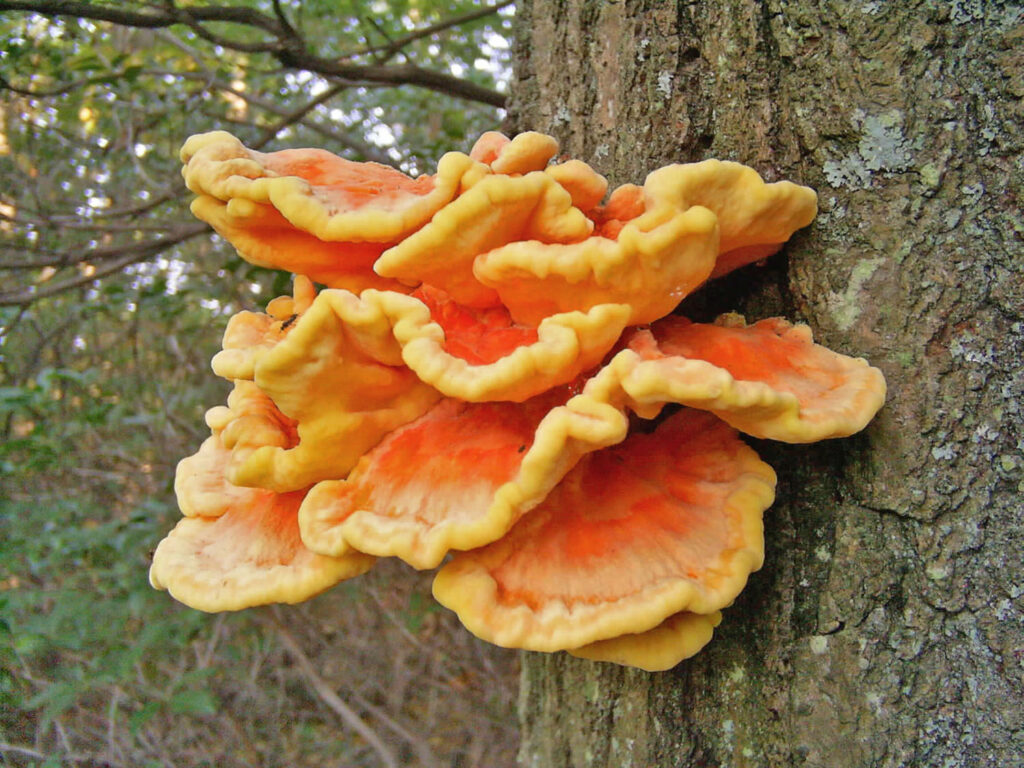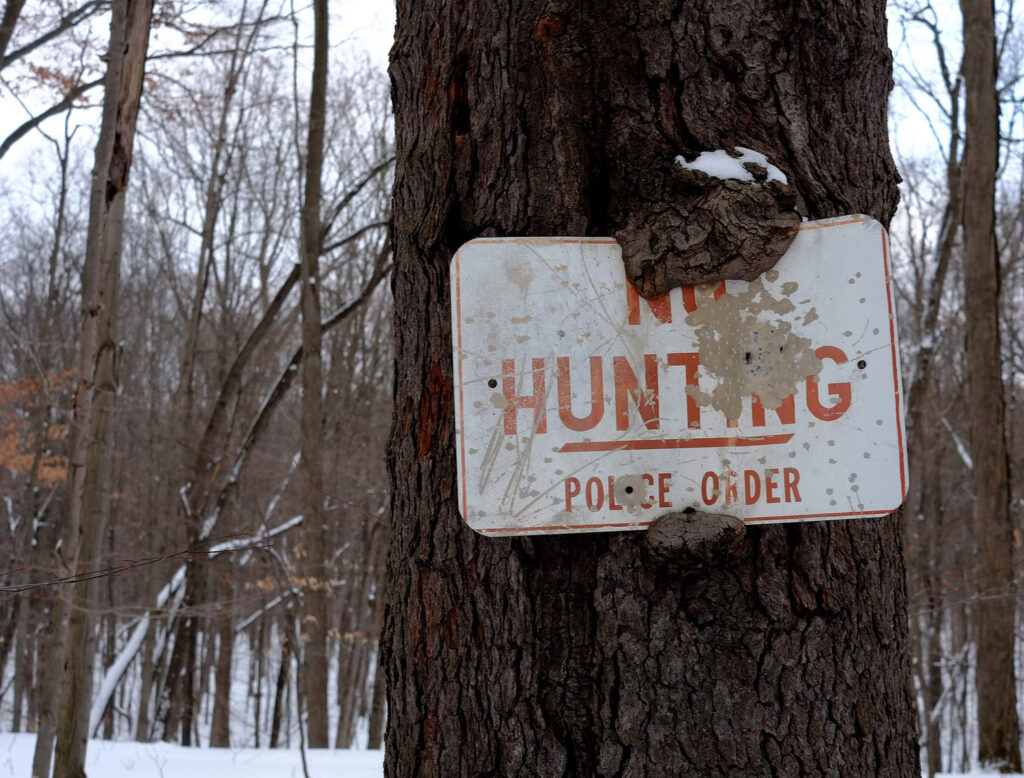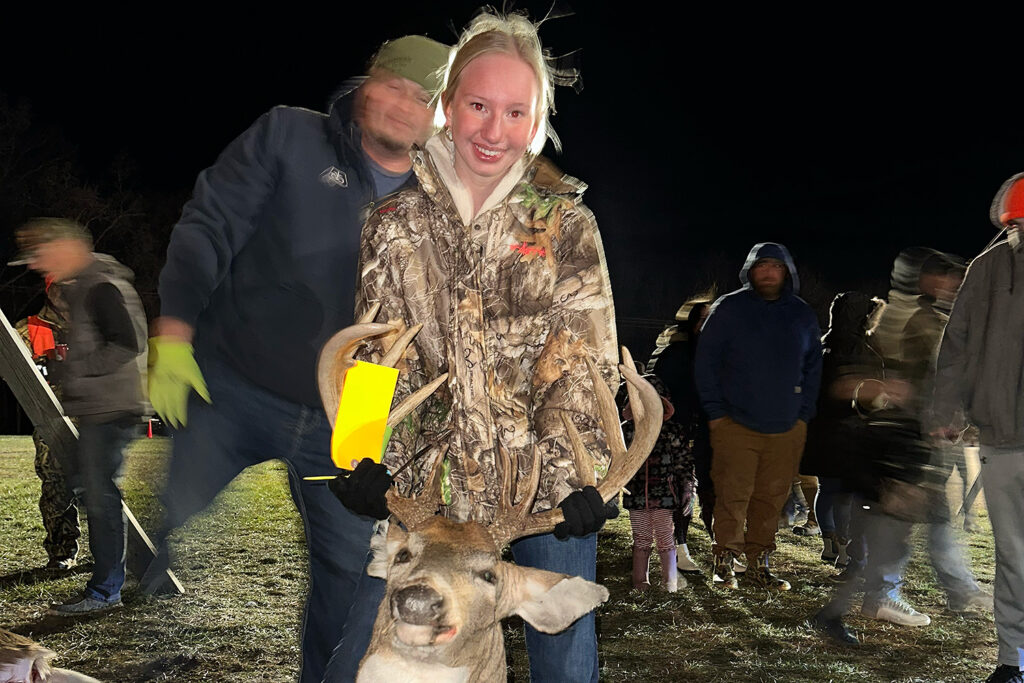A recent run on the North Country Trail proved that Michigan is a forager’s paradise. As I made my way down the trail, I noticed a neon-orange cluster glowing on the base of a large dying oak. Chicken of the Woods!
Michigan’s sauna-like humidity and heat turn our forests into a fungal paradise, and this was a prime find. Don’t get me wrong, store-bought mushrooms are great, but nothing beats finding one in the wild. I didn’t have any gear with me, so I marked the spot on OnX Maps and came back the next day.
The sun was blazing and the air was thick as I worked my way back to the treasure. It hadn’t even been 24 hours by the time I made it back, but in that time, someone else had found my stash! Half the cluster was gone. No hard feelings, though. It was a massive growth, and there was plenty left to harvest.
Chicken of the Woods (Laetiporus sulphureus) is a wonderful mushroom for newbie foragers because of its unmistakable appearance. It’s a bright yellow-orange when young, which sticks out against the deep greens of the late summer Michigan woods. These beautiful mushrooms grow in layered, shelf-like clusters, as opposed to the cap-and-stem like Portobellos. The underside has a suede-like texture with tiny pores, not gills. The Jack O’Lantern mushroom (Omphalotus illudens) is the only similar species in Michigan, but it has gills and really only bears a faint resemblance.
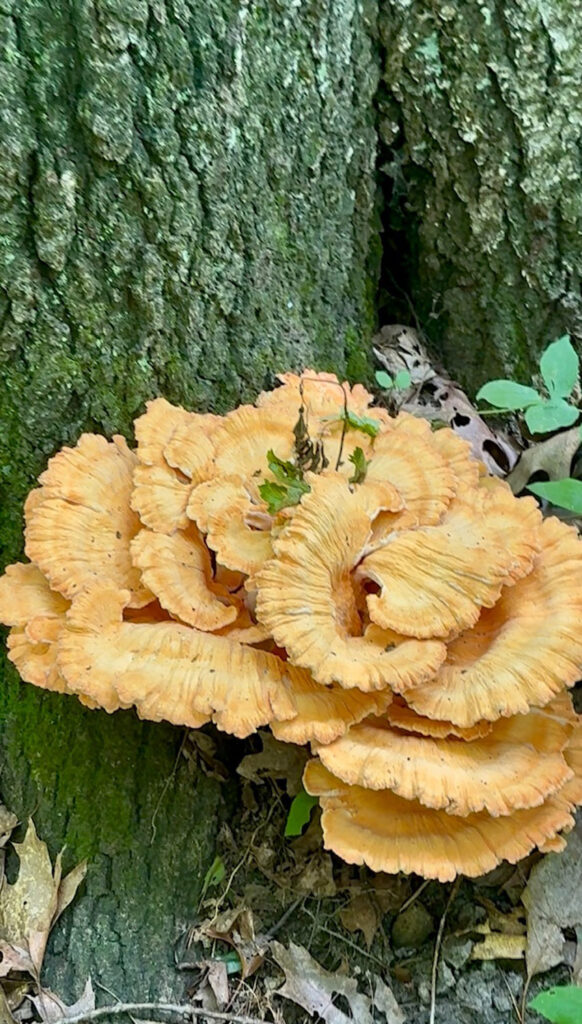
You can find Chicken of the Woods on dead hardwoods, like oak or maple, especially in late summer. While there is some debate about it, it’s probably best to avoid Chicken of the Woods growing on yew trees, as the bright mushrooms can absorb toxins from the tree.
Foraging is extremely rewarding, but it does require a little bit of care. You don’t want to eat Chicken of the Woods raw or even undercooked. You’ll get an ugly stomach ache. Also, some people are sensitive even to cooked mushrooms, so start small. Use a sharp knife to cut the tender shelves when you harvest, but leave a little bit for regrowth. When you make it back to the kitchen, brush off dirt and bugs before cooking thoroughly. For long-term storage, dry extra stems in a low oven (about 200 degrees Fahrenheit) for several hours. Stored properly in an airtight container, they’ll last for months.
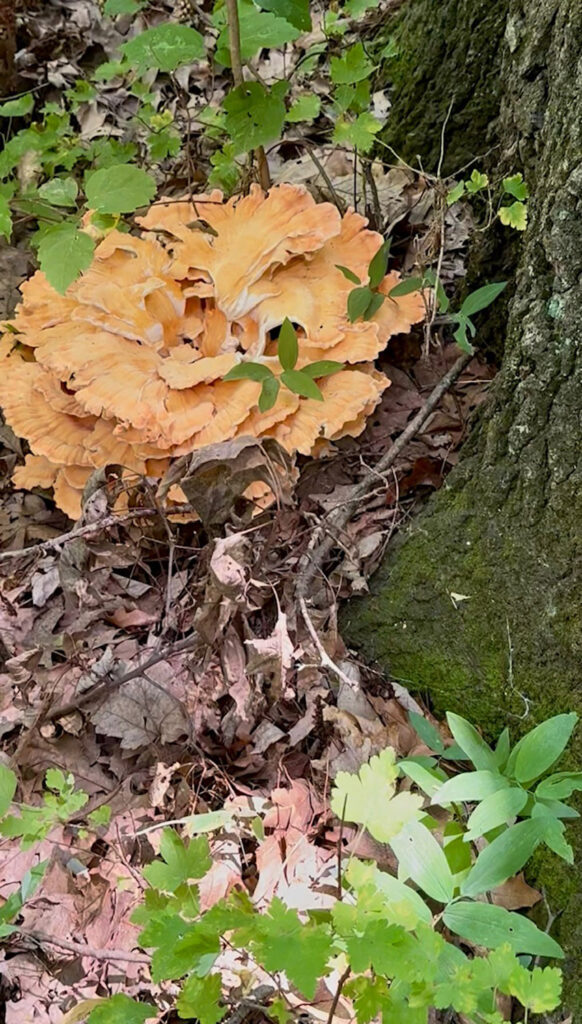
Why forage? It’s a fun way to eat really well. It feels more like how we’re supposed to be feeding ourselves. Every bit of time spent in the woods feels like a hunt. You feel like you’ve done something good after a successful forage, instead of simply checking off another errand by running over to Meijer. Sure, you could buy mushrooms off the shelf (Chicken of the Aisle?), but where’s the fun in that?
I’d rather hike to a fungus than push a cart any day.
James Zandstra is an experienced outdoorsman with a passion for the Mitten State. Follow his work on X @TheFairChase1.
